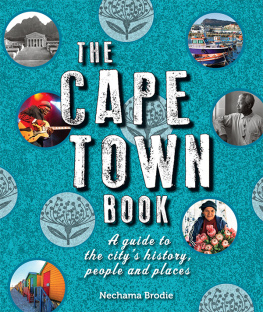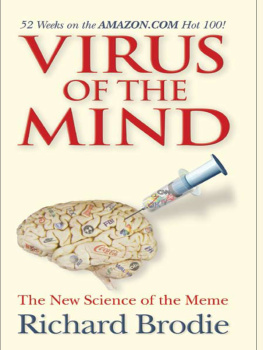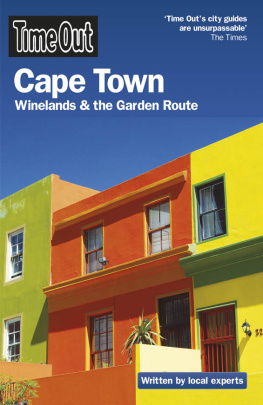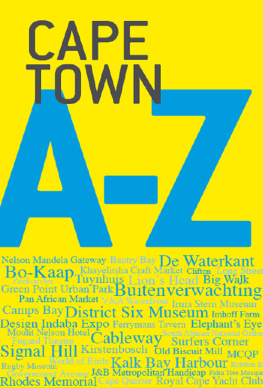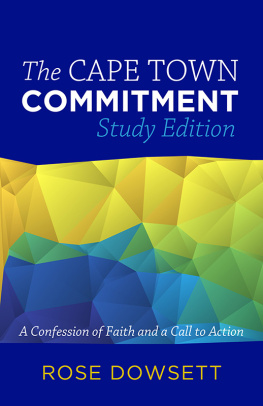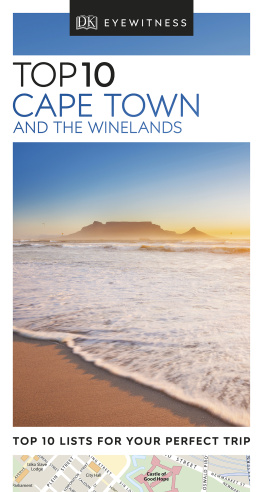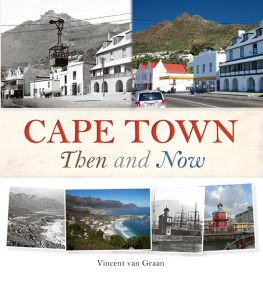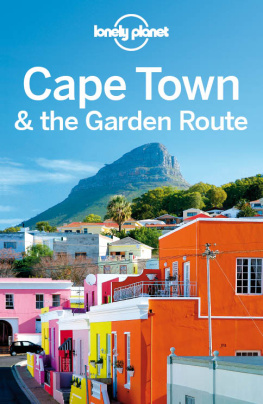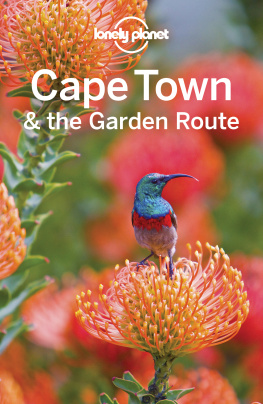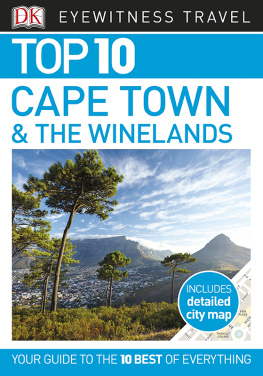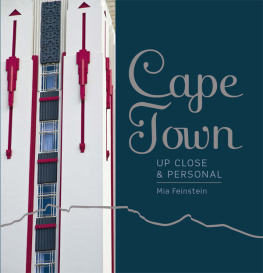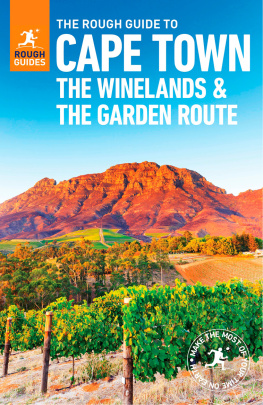
Published by Struik Travel & Heritage
(an imprint of Penguin Random House South Africa (Pty) Ltd)
Reg. No. 1953/000441/07
The Estuaries No. 4, Oxbow Crescent (off Century Avenue), Century City, 7441 South Africa
PO Box 1144, Cape Town, 8000 South Africa
Get monthly updates and news by subscribing to our newsletter at
www.randomstruik.co.za
First published in 2015
1 3 5 7 9 10 8 6 4 2
Copyright in text, 2015: Nechama Brodie
Copyright in photographs, 2015: See credits on
Copyright in maps, 2015: Liezel Bohdanowicz/Penguin Random House South Africa (Pty) Ltd
Copyright in published edition, 2015: Penguin Random House South Africa (Pty) Ltd
Publisher: Pippa Parker
Project manager/editor: Roelien Theron
Managing editor: Helen de Villiers
Editor: Alfred LeMaitre
Design director: Janice Evans
Design concept: Adle Sherlock, adapted by Janice Evans
Designer: Peter Bosman
Picture researcher: Colette Stott
Cartographer: Liezel Bohdanowicz
Proofreader: Mark Ronan
Indexer: Sanet le Roux
Reproduction by Hirt & Carter Cape (Pty) Ltd
Printed and bound by CTP printers
All rights reserved. No part of this publication may be reproduced, stored in a retrieval system, or transmitted, in any form or by any means, electronic, mechanical, photocopying, recording or otherwise, without the prior written permission of the copyright owner(s).
While every effort has been made to ensure that the information in this book was correct at the time of going to print, some details might since have changed. The author and publisher accept no responsibility for any consequences, loss, injury, damage or inconvenience sustained by any person using this book. Please email any comments or updates to:
TCTB@penguinrandomhouse.co.za
Print: 978 1 92054 598 7
E-pub: 978 1 92054 599 4
PDF: 978 1 92821 300 0
Contents














Greater Cape Town

Introduction: You Are Here
In 1963, the City Council of Cape Town published an official history of the city to mark the golden jubilee of the 1913 unification of various municipalities that make up much of Cape Town today. In the opening pages, the administrator of the Cape, JN Malan, offered his version of the citys beginnings: On the 7th of April 1652, he wrote, Jan van Riebeeck landed on the shores of Table Mountain to begin the civilisation of Southern Africa. As if to confirm this account, the more than 650 pages that followed featured almost exclusively photographs of white people: on beaches, in boardrooms, on boats, in ballrooms In reality, less than half the city was white, but Cape Towns coloured community was admitted to its own history only as a footnote. Black Capetonians (described as the guest who came to stay) were depicted through photographs of children happily at play in the fields and crches of Langa. No mention was made of the anti-apartheid protests that had claimed several lives in 1960.
Within 10 years of the books publication, the entire city would be reshaped through the provisions of the Group Areas Act, with the central, southern and seaboard suburbs transformed into a whites-only metropolis, as the authors had promised. With a few exceptions, these areas are largely unchanged today.
More than 20 years after the formal end of apartheid in 1994, there are many who dislike being reminded of what came before. Others are still finding the words to talk about it. Other histories, still, are not being widely told. Perhaps history itself never really changes. But how we tell our histories can and most certainly should transform our experience of the past, otherwise the patina of time becomes a cosmetic veneer of nostalgia.
The Cape Town Book (like its sister publication, The Joburg Book ) approaches the history of the city in an unusual way: through space, as well as time. Each chapter (barring the second) explores a specific geography by looking at the individuals and communities that inhabited these spaces. This allows for many marginalised stories the first people, slavery, the scale of forced removals to be read as part of a whole. Although the book aims to be an inclusive history of Cape Town, for reasons of space some topics have been treated rather briefly. Where possible, the book directs the reader to specialised publications that offer insight into specific themes or events.
In the nearly four years that I worked on this project, I was fortunate to engage with a number of experts whose own work and research provided the foundation for this books content. Their input allowed me to understand Cape Town in entirely new ways, and their generosity affirmed that history is meant to be shared, not owned. I am indebted to Nigel Worden, Nigel Penn, Sean Field, John Edwin Mason, Lalou Meltzer, Ebrahim Rhoda, Geoffrey Mamputa, Chrischene Julius, Brian Ingpen, Wendy Black, Shanaaz Galant, Thijs van der Merwe, Skye Grove and my research assistant, James Hutton.
Thanks are also owed to the archivists, curators and photographers who provided this book with its remarkable visual component. As always, it is my hope that national treasures, like those held at the Western Cape Archives and Records Service, Museum Africa, the Library of Parliament and the National Library of South Africa, will get the recognition they deserve.
Finally, to Alfred LeMaitre, to Pete Bosman, to Colette Stott and to Roelien Theron: thank you for making it so much better than it was when I began.
Nechama Brodie
August 2015
CHAPTER ONE
WHAT CAME BEFORE
A man must for years examine for himself great piles of superimposed strata, and watch the sea at work grinding down old rocks and making fresh sediment, before he can hope to comprehend anything of the lapse of time, the monuments of which we see around us.
Charles Darwin, On the Origin of Species

Next page
